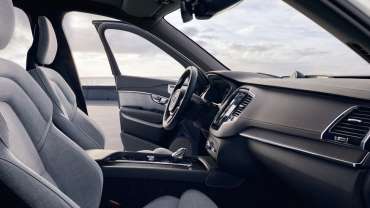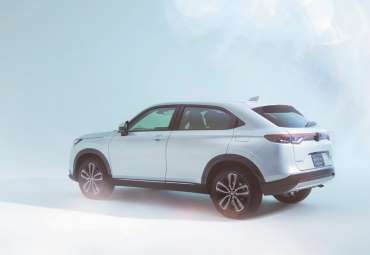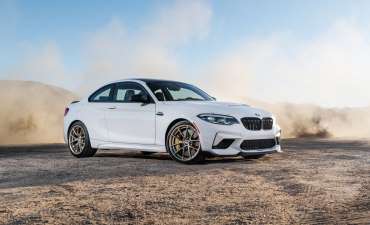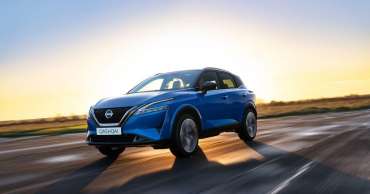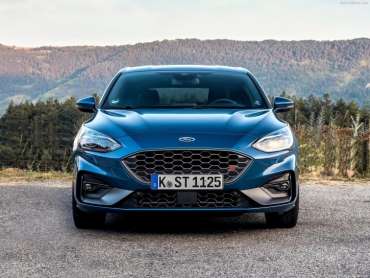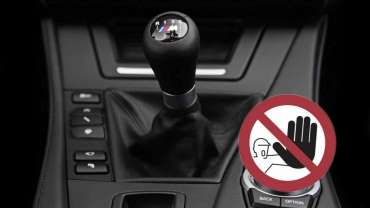
Worldcarblog.com
What could be the biggest problem in driverless cars
By eliminating the most common cause of traffic accidents - humans, and introducing autonomous vehicles into traffic, the number of accidents and deaths is expected to decrease. However, these vehicles also represent a completely different type of risk for drivers, passengers and pedestrians.
Autonomous vehicles are artificial intelligence systems that use machine learning techniques to collect, analyze and transfer data, all in order to be able to make the decisions that people make in conventional cars.
However, as zimo.dnevnik.hr writes, like any other IT system, artificial intelligence is also susceptible to cyber, hacker attacks that can jeopardize the proper functioning of vehicles and cause major traffic problems.
What's more, you don't have to be a hacker or an IT expert to streamline the operation of autonomous vehicles - this would be enough to make this happen: add paint to roads to fool navigation or put a sticker on traffic signs, say Stop, to prevent it is recognized by the artificial intelligence system (AI), are just some examples of such possible attacks.
Such situations can lead the AI system to misclassify objects, and that is why it starts behaving dangerously in traffic.
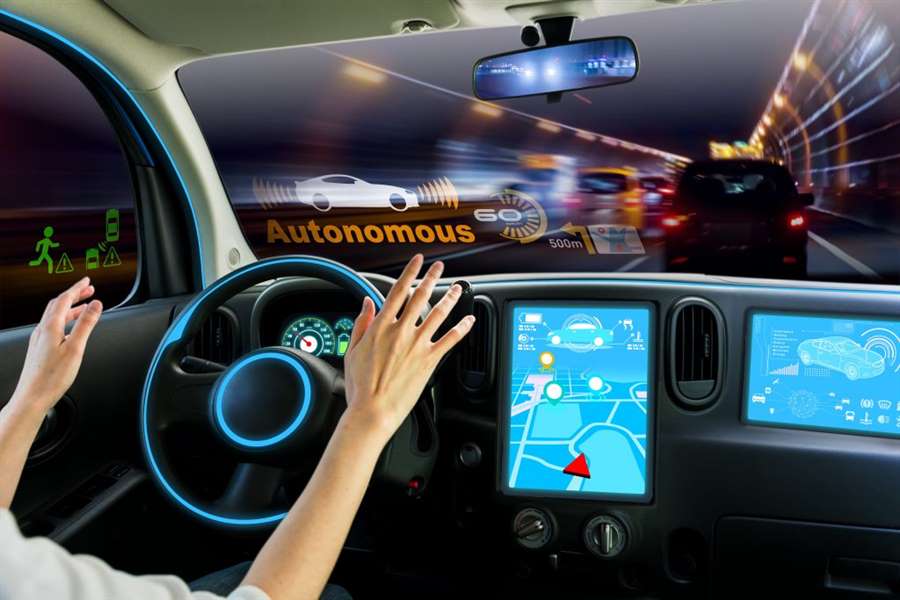
Autonomous vehicle AI systems work constantly to recognize traffic signs, then other vehicles, as well as to assess their speed in order to plan further travel. If we omit unintentional threats, such as sudden failures, these systems are vulnerable to international attacks that have the specific goal of disrupting AI systems and disrupting traffic safety functions.
A new report by the European Union's Cybersecurity Agency (ENISA) and the Research Center (JRC), the European Commission's science and knowledge service, points to cybersecurity risks associated with the introduction of artificial intelligence in autonomous vehicles and makes recommendations on how to avoid them.
When an endangered autonomous vehicle crosses the border of a member of the European Union, its vulnerabilities also cross the border. Safety in that sense should not be a subsequent thought, but a precondition for the reliable release of vehicles on European roads, points out Juhan Lepassaar, Executive Director of ENISA. It is also important that European laws ensure that the benefits of autonomous driving do not jeopardize safety risks.
How can this be prevented
The report also makes several recommendations on how to improve the AI safety of autonomous vehicles.
One of these recommendations is to regularly check AI components throughout their lifetime. Systematic verification of AI models and data is key to ensuring that the vehicle always functions properly when faced with unexpected situations or a malicious attack.
The second recommendation says that continuous risk assessments should be conducted with the help of threat intelligence, which would enable the identification of potential AI risks and the emergence of new threats related to the introduction of artificial intelligence in autonomous driving.
Adequate AI safety policy and AI safety culture should govern the overall supply chain in the automotive industry.
The automotive industry should also embrace a new approach to design for the development and use of AI functionality, where cybersecurity would become a central element of digital design from the outset.
Finally, it is important for the automotive sector to raise its preparedness level and further strengthen incident response capabilities, so that they can cope with the emergence of cybersecurity problems associated with artificial intelligence.
2021 Volvo XC90 T8 Tailored Wool Interior Review: Wooly Bully
Warmer in winter and always cooler than ubiquitous leather.
Why does everybody want a leather interior? These days even cars that aren't lined with cow mostly get swathed in petrochemicals longing to pass for cow, with euphemistic marketing handles ranging from the generic leatherette or vegan leather to trademarked monikers like BMW's SensaTec, Mercedes' MB-Tex, and VW's V-Tex. Some of our favorite car interiors ever have sported cloth seats, from the Porsche 928's psychedelic Pasha checkerboard to the 911's Pepita houndstooth and various tartan plaids. Sadly, they're all but gone today. So it seemed downright newsworthy when a 2021 Volvo XC90 T8 turned up in my driveway swathed in wool upholstery fabric. Volvo calls it Tailored Wool Blend, and I relished every cosseted moment in these thrones.
What Is Tailored Wool Blend And What Colors Are Available?
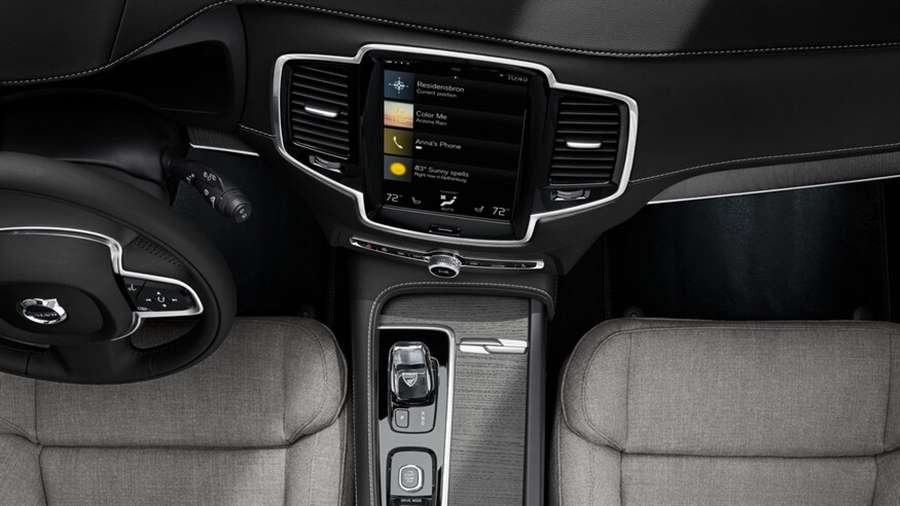
This tweedy weave is comprised of 30 percent wool and 70 percent recycled polyester, so it might be even earth-friendlier than "vegan leather." Tailored Wool Blend appeared as a no-cost option on the 2020 refresh of the XC90 Inscription model in a color called Midnight Zinc. The same option is also available on XC60 Inscription models.
At launch last year, a second color called Slate was offered, but it proved less popular and was dropped for 2021. Volvo does offer another textile, known as City Weave Textile fabric, as a no-cost option on the S60, V60, and XC60 Momentum trim grades. It's in a hue called Blonde and paired with Iron Ore Inlays, and it appears darker and more "plaid" than our Midnight Zinc material.
Inherent Climate Comfort
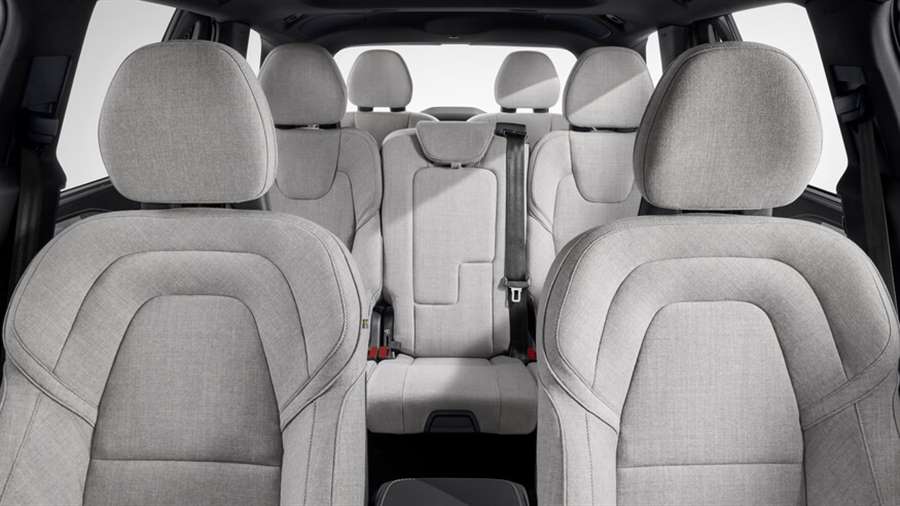
It should surprise nobody that cloth seats always feel warmer in the winter and cooler in the summer—even when contacting bare skin after direct sunlight exposure. The material also presents less resistance to heating, so you'll generally tend to feel the warmth from seat heaters faster. Despite their inherently breathable nature, Volvo at least does not offer a ventilation/seat-cooling option with either its Tailored Wool Blend or City Weave Textile upholstered seating.
What About Cleanup, Care, And Maintenance?
First, how big a slob are you? Inveterate drive-thru diners who regularly juggle sloppy Big Macs while driving will probably find that leather/pleather/vinyl products wipe clean easier. Long-haul car owners who read their owner's manuals and attempt to adhere to the recommendations therein will find that greater care and maintenance is recommended for leather. Case in point: The manual in our XC90 T8 devoted just 84 words to describing how to clean the wool blend but prattled on with 267 words of advice for maintaining the leather, including a recommendation to apply protective cream quarterly. I can tell you this much: Volvo deems Tailored Wool Blend kid-friendly enough to offer its $300 integrated center booster cushion. I'd cheerfully order up a textile interior and just apply some Scotchgard from time to time.
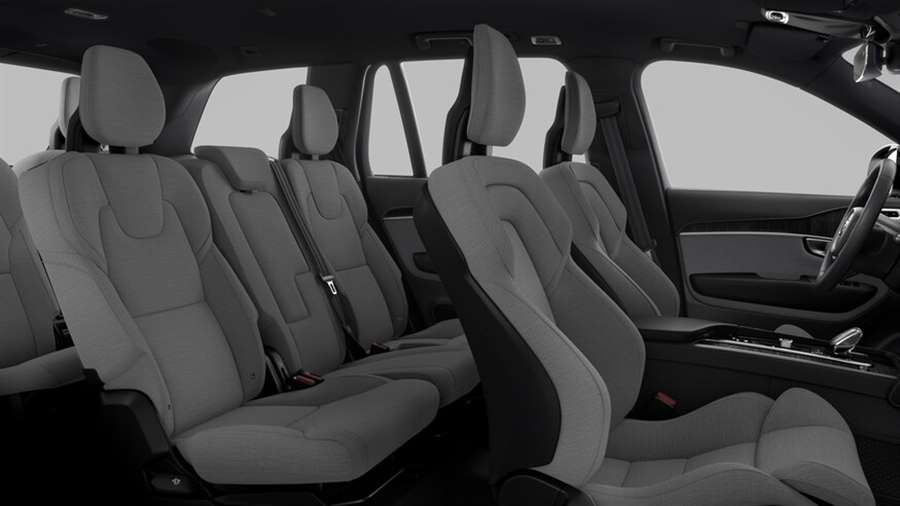
Might The Fad Be Returning?
Way back in the era of chauffeur-driven "town cars" featuring an enclosed passenger compartment and an exposed front seat, Jeeves sat on durable, weather-resistant leather, while His and Her Grace luxuriated in mohair, wool, or other sumptuous fabrics. Velvets and other fabrics remained popular in luxury cars well into the '60s, and wool remains the fabric of choice for "Toyota's Rolls-Royce"—the Century—because it's deemed more dignified; fidget as you will, a wool seat will never make the flatulent noises leather can. Bentley has just reintroduced a Mulliner Tweed interior, using fabric sourced from Scotland, though it's generally used to adorn the door panels. (Of course, companies like Bentley and Rolls-Royce will cheerfully swaddle any part of their cars in any material you desire if the price is right.) We must point out that one of our favorite cloth upholstery offerings of all time remains available on the 2021 Volkswagen GTI: Clark Plaid cloth inserts. Come on, Tesla, why not double down on your new Plaid powertrain by offering a nice tartan upholstery package?
Quite different: Honda unveils new HR-V hybrid (PHOTO)
Honda has unveiled a new generation of its compact crossover HR-V. In addition to the new design, this model will be offered as a hybrid electric vehicle, and it will arrive in Europe at the end of 2021.
The introduced HR-V is the latest model in Honda's range that bears the emblem e: HEV (hybrid electric vehicle). In addition, now this compact crossover comes for the first time with a rather accentuated coupe line.
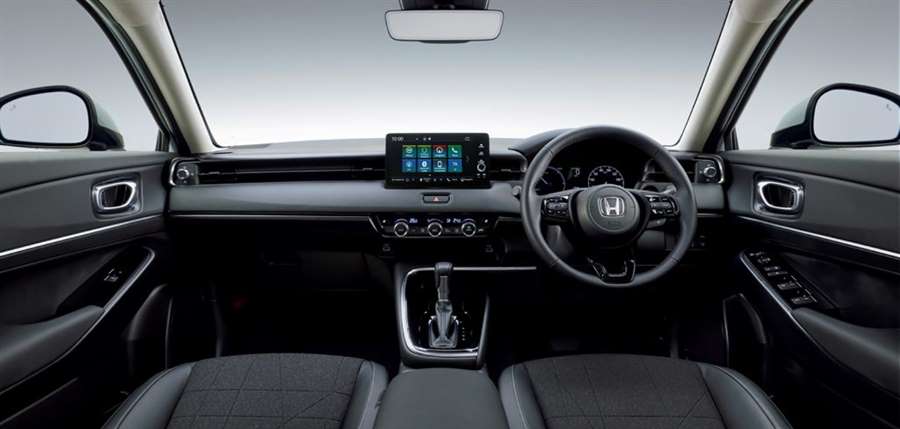
It also has a new integrated radiator grille, a long, lower hood and sharper, more vertical lines that have allowed this model to retain a spacious interior for four passengers, as offered by its predecessor.
The new HR-V also retains the familiar seats, which can provide a flat boot floor after folding down the backrest or folding up. Capacity data has not yet been disclosed.
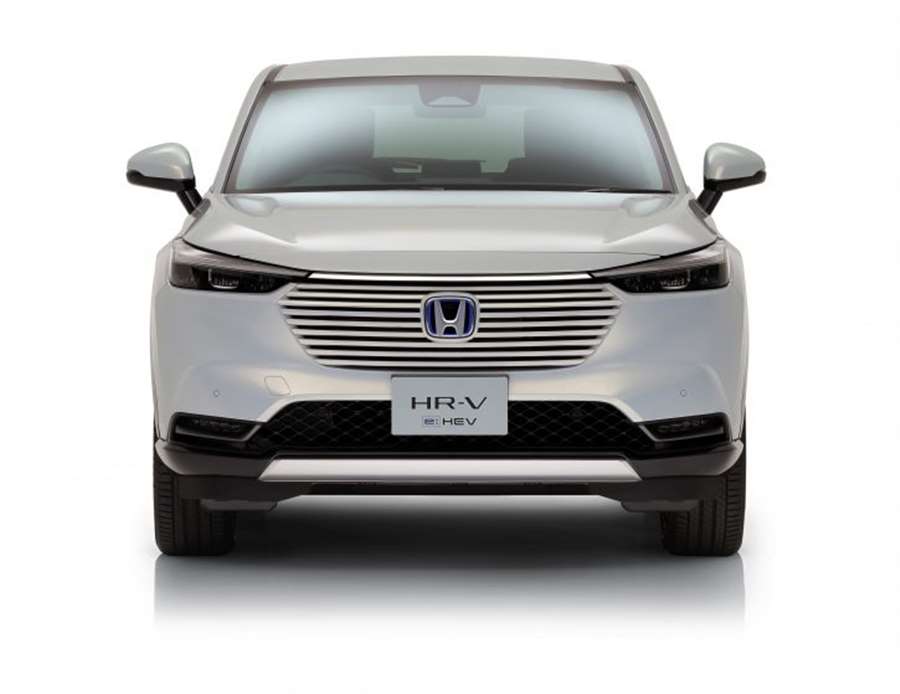
The cabin is now modern and minimalist with a horizontal instrument setup.
A new crossover, in line with Honda's goals of electrifying all major models by 2022, is expected on the European market later this year.
Tested: BMW M2 CS Hangs in There
A pricey special-edition M2 with a 444-hp heart reminds us of the BMWs of the past.
Taglines work. Take, for example, the incredible motivational power of a "Hang in There" cat poster or the decades that BMW marketed itself as The Ultimate Driving Machine. In those days, BMW's cars regularly delivered class-leading handling and fun. In 2006, the German brand dropped the tagline and began a slow move away from cars that sing and dance. But the company still has a few, such as the M2 CS, that are hanging in there, clinging to the branches of the old family tree.
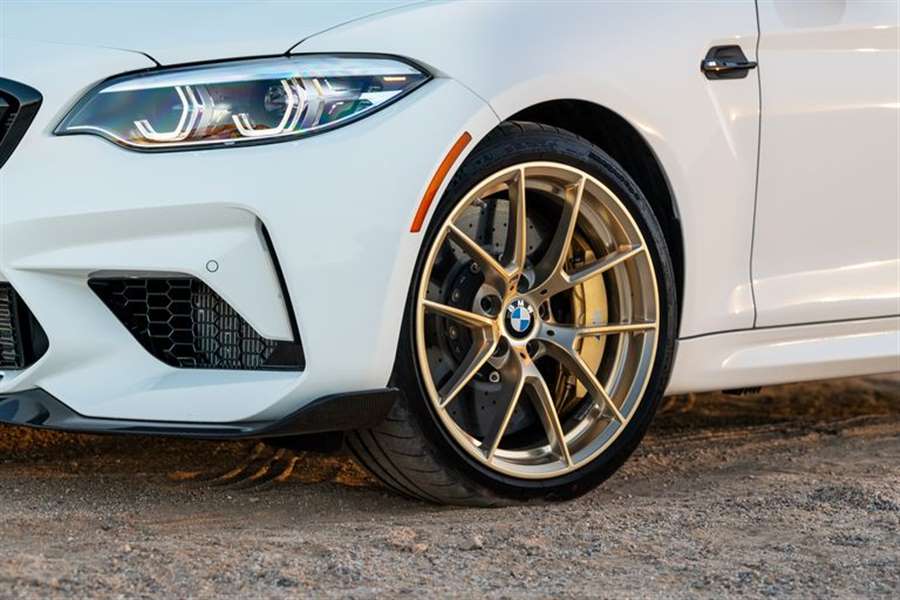
The M2 CS is a limited-edition, high-powered version of the M2, which is itself the hot version of the 2-series coupe. We're talking the rear-wheel-drive 2-series, not the front-drive-based, four-door 2-series Gran Coupe abomination that placed last in a recent comparison test and is best thought of as an ultimate disappointment. Thankfully, the M2 CS has nothing in common with that car.
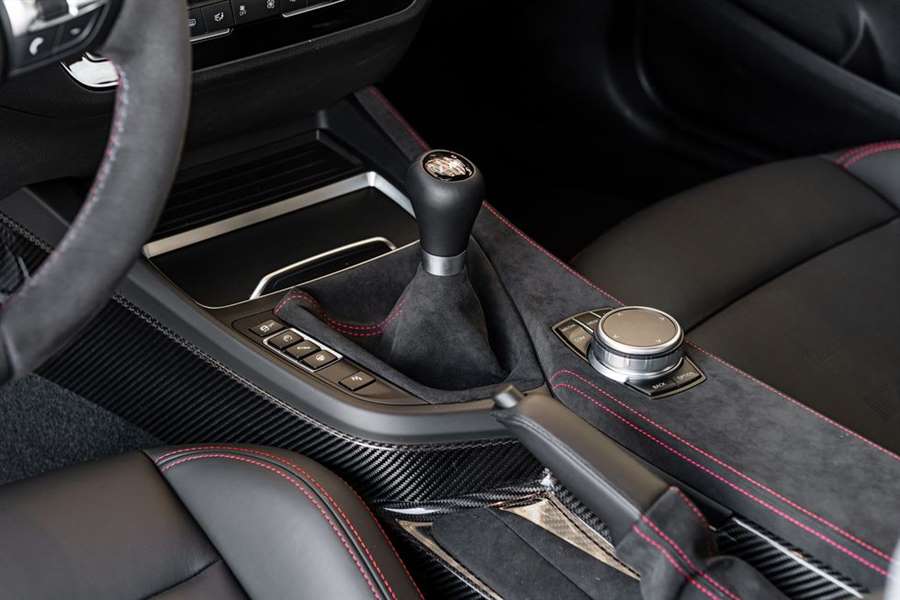
It does, however, share some parts with the outgoing Competition-spec M3 and M4, including the 444-hp version of the M division's twin-turbo 3.0-liter inline-six. Despite being a healthy 39 horses up on the M2 Competition, the CS isn't any quicker than its sibling to relatively low-speed thresholds. Basically, it is limited in the run to 60 mph by the traction of its rear tires. But the CS pushes ahead after hitting 60 mph in 3.9 seconds, and it passes through the quarter in 12.1 seconds at 120 mph, two-tenths of a second quicker and 4 mph faster than the stick-shift M2 Comp.
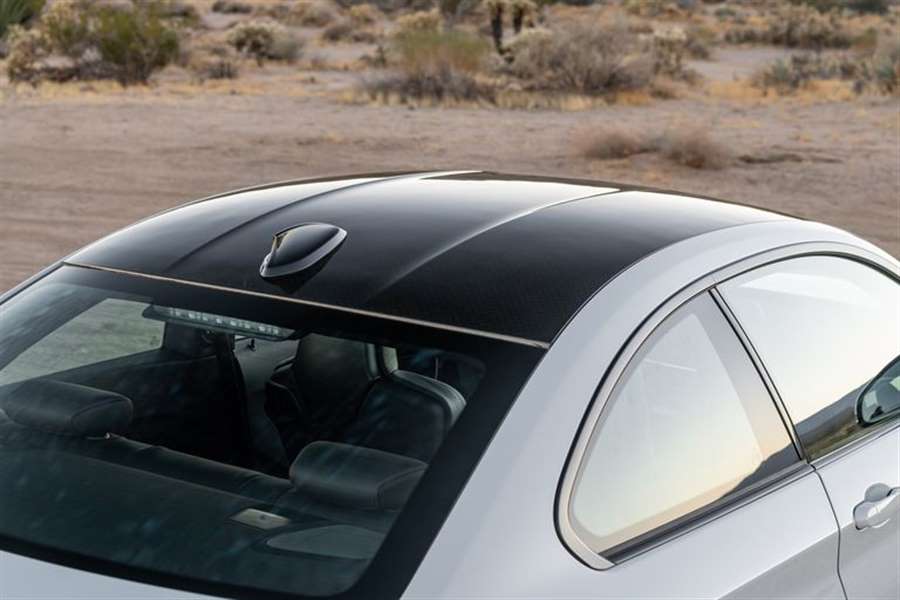
With its six-speed manual transmission, the CS pulls us in close. If you're lazy, it'll rev match on downshifts, and the shifter has the positive, if slightly rubbery, motion of BMWs past. Optional matte-gold wheels shod with Michelin Pilot Sport Cup 2 track rubber are part of the CS makeover. A test-equipment snafu cost us our skidpad measurement, but by the seat-of-pants measurement this car has more grip than the 1.00 g we measured in an M2 Competition riding on Michelin Pilot Super Sports. We promise.
Highs: An angry car designed to make us smile, manual-transmission joy, BMW's best stuff.
Those grippy Cup 2 tires probably deserve some credit for removing a lot of numbness from the M2's steering. While you can't quite read the Braille of the pavement through the Alcantara-wrapped wheel, the steering feedback is livelier than we've seen in recent BMWs. Adaptive dampers, similar to those found on the previous-generation M3 and M4, are available for the first time on the M2 and offer three modes. The Comfort setting works brilliantly on canyon roads (and probably even on racetracks), stiffening the damping as needed. Notching up to the harsher settings fails to improve handling and makes the ride punishingly firm.
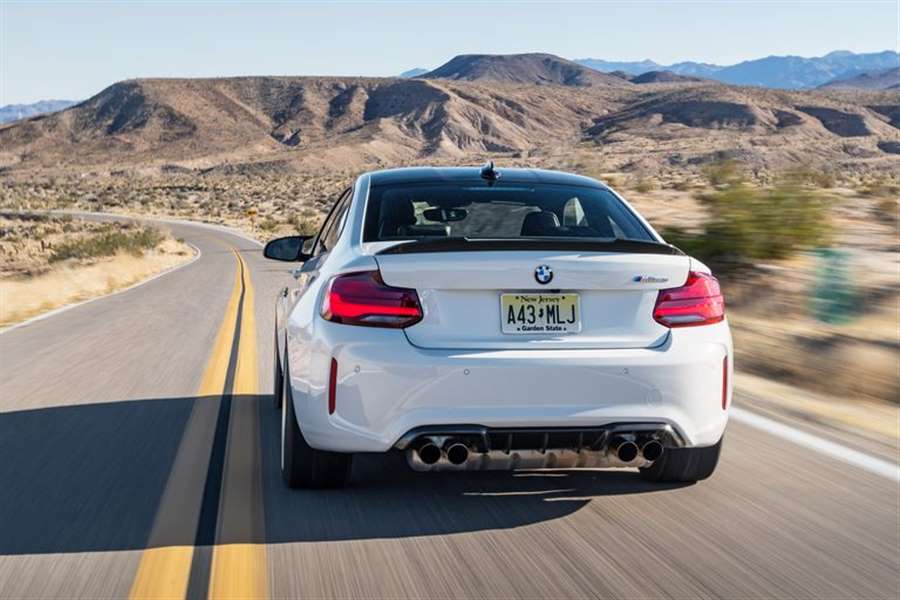
Carbon-ceramic brake rotors are an $8500 option and proved to be up to the abuse leveled at them during testing and on the road. In addition to fade resistance, an added benefit of the ceramic rotors is that they won't leave brake dust on the lovely gold wheels. Fearless prediction: When it comes to wheels, gold is the new black. The brake pedal is a little softer than we like when used casually, but work the brakes hard and there's nothing to complain about. Stopping from 70 mph took a short 145 feet, and hauling down from 100 mph required 301 feet.
An M2 CS on a mountain road is a happy place. There's a slight lag when you hit the accelerator on corner exit, as the turbochargers need a moment to spin up. To ensure sharp engine responses, old M cars were naturally aspirated and fitted with individual throttle bodies, but none of them made torque like modern turbocharged engines do. The CS produces 406 pound-feet of torque at a low 2350 rpm.
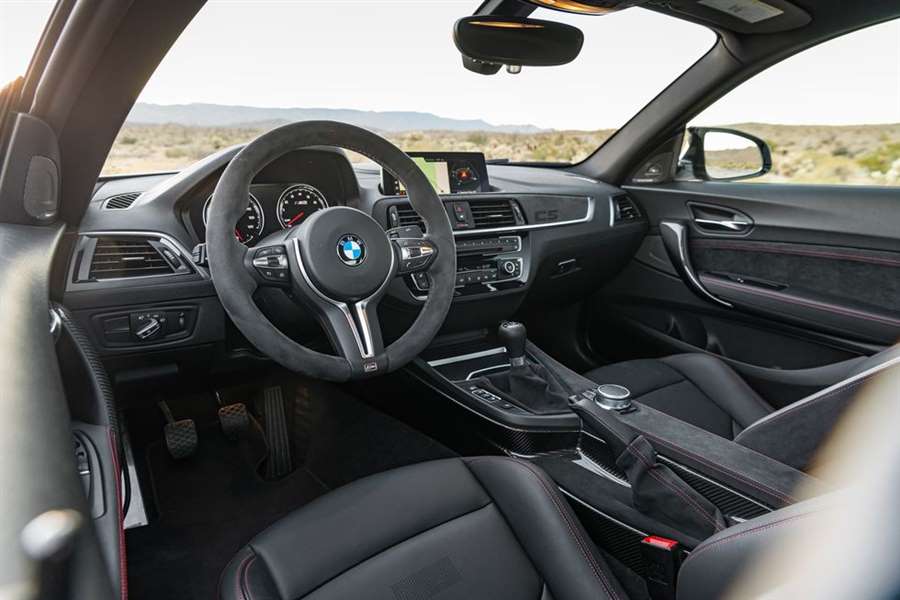
Lows: Some turbo lag, pushing six figures is pushing it.
Other parts shared with the old M3/M4 include the deeply bolstered front seats and the Alcantara-wrapped steering wheel. Rear-seat space is tight, and there are only two seatbelts back there, making this a four-seater. Carbon-fiber and more Alcantara trim dress up this aging interior, and much of the switchgear appears to be from BMWs of the past, but we're totally okay with that. The infotainment system features BMW's latest software, and Apple CarPlay is included.
A carbon-fiber hood and roof help the CS weigh 83 pounds less than the M2 Competition. Pushed to its lofty cornering limits, the CS acts even lighter and smaller than its 3489 pounds. Our main problem with this astonishingly good car is its $84,595 starting price. The letters CS cost more than SS 1LE, ZL1, ZL1 1LE, GT PPL2, and GT500. Those exotic Camaros and Mustangs offer more power and the same connected driving experience, but the M2 is smaller, lighter, and undeniably special in its own right. It's one of the last true BMWs. We just hope the engineers responsible have a particular cat poster in their offices.
This is a brand new Nissan Qashqai! Now without a diesel he is shooting at the top of the class again
The third generation no longer has diesel engines, which as an alternative come with hybrid versions of the existing turbo gasoline
Three million copies sold in Europe and a total of five million worldwide. A nice number for both previous generations of Nissan Qashqai, a mega-popular SUV of the compact class, well accepted among Croatian buyers of this class. Great numbers and history, but which set a high bar of expectations from the newly introduced new model.
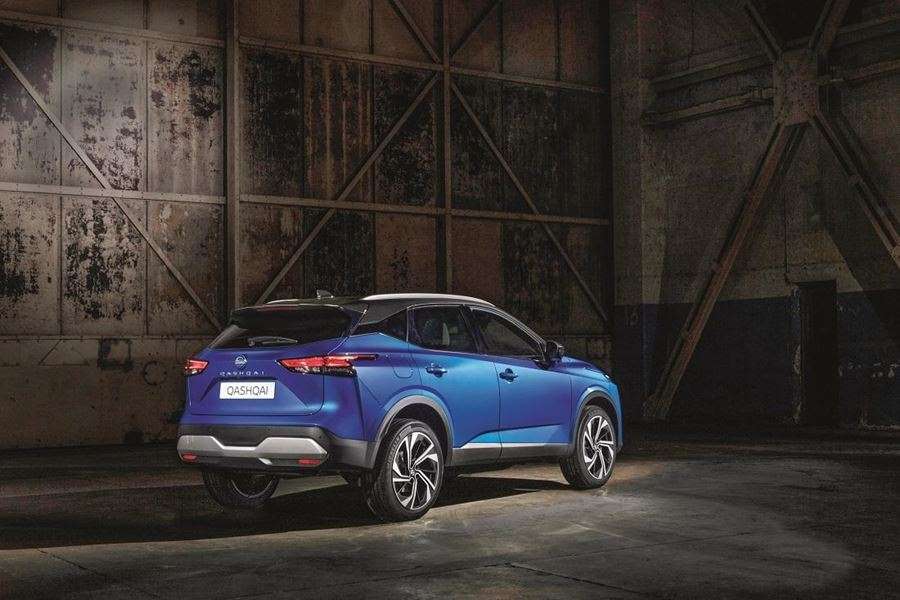
Nissan Qashqai, photo: Nissan
There is not much to say about design, the first step in appearing in front of customers. Qashqai retains the recognizable idea and lines of the previous model, but with cleaner lines, some details performed as a variation on the theme of Juke and Nissan's signature with a mask in the characteristic V-shape. A dose of modernism is given to it by details such as self-regulating, smart LED Matrix lights, 11 body colors, five two-tone combinations and rims that reach up to 20 inches as standard. The first photos create the impression of growing size and - that's right.
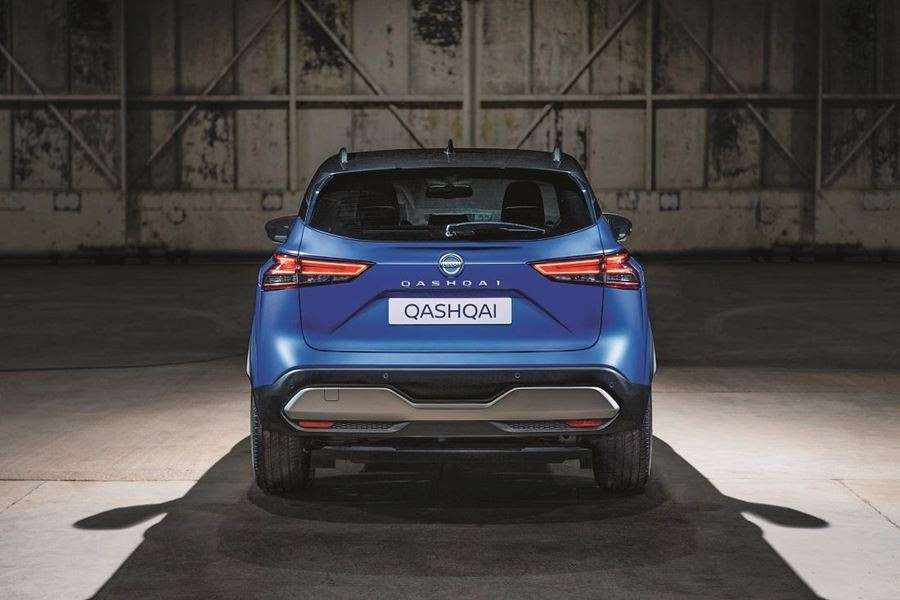
Nissan Qashqai, photo: Nissan
It is 3.5 centimeters larger (4,425 m), 3.2 centimeters wide (1,838 m), one centimeter high (1,635 m), and the larger corporate Renault-Nissan CMF-C platform, two centimeters larger axle, gives the impression of size. spacing (2666 mm). The result?
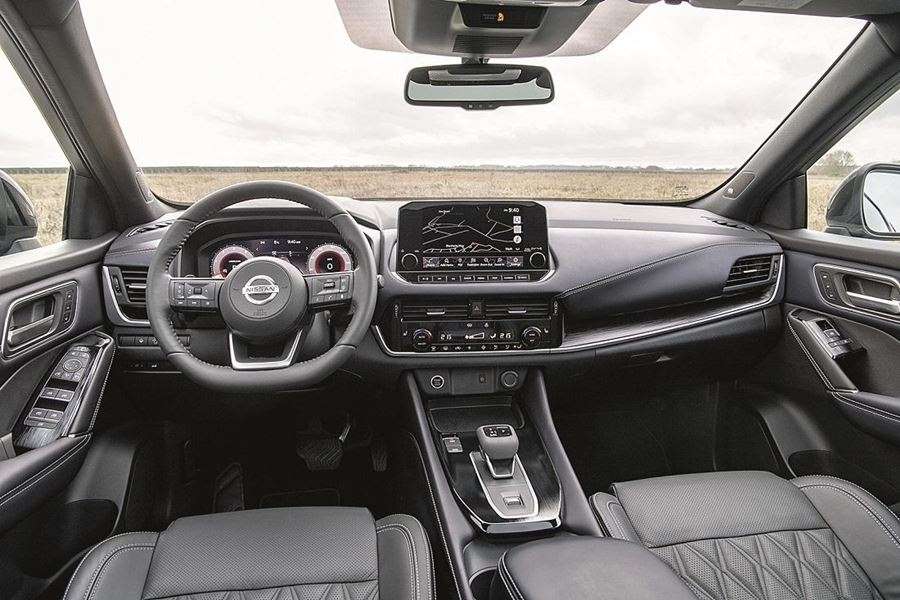
Nissan Qashqai, photo: Nissan
Round three centimeters more space for the passenger's knees in the rear seat (maximum 61 centimeters), a centimeter and a half more headroom and significantly more space in the front seats, where two-meter-tall people will also have a comfortable position. The rear pair of doors opens up to 85 degrees, which greatly facilitates access to the rear seat, and especially the placement of children in the seat.
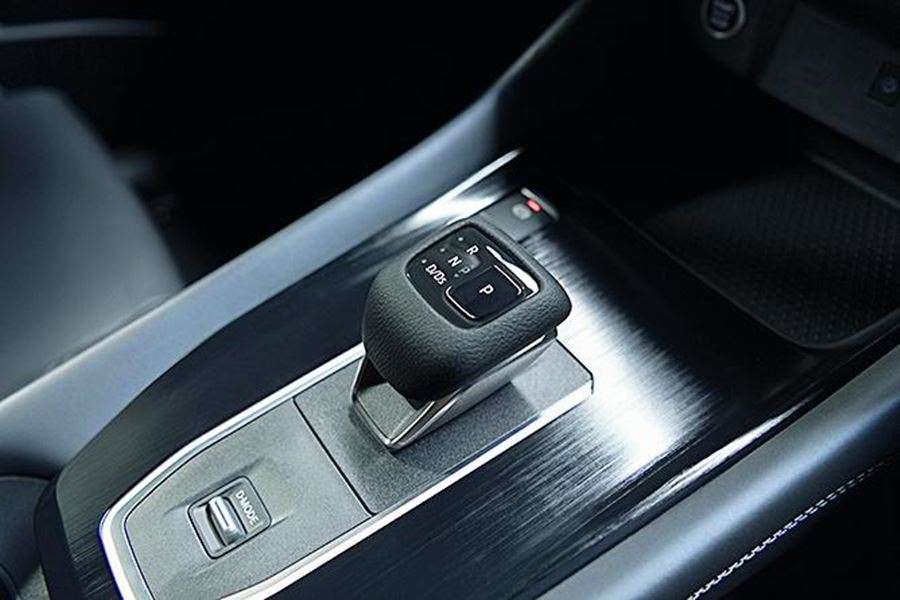
Nissan Qashqai, photo: Nissan
On top of all that, the trunk grows, by 50 liters, in this class more suitable 480 liters. It will be easier to access because the entry threshold is lowered by two inches. Aluminum alloys are also used more in the construction of the body, so let's say four side doors, fenders and a roof bring total savings of 21 kilograms. The fifth door is now made of composite materials and is 2.6 kilograms lighter, and the platform itself on the scales shows 60 kilograms less than the previous one. Niisan engineers swear that it is almost half as strong, or 41 percent.
The interior also boasts noticeably better materials, including nappa leather, a generally more expensive visual and sensory atmosphere, but also hedonistic elements of equipment such as massage seats or a concert Bose Premium hifi system with 10 speakers.
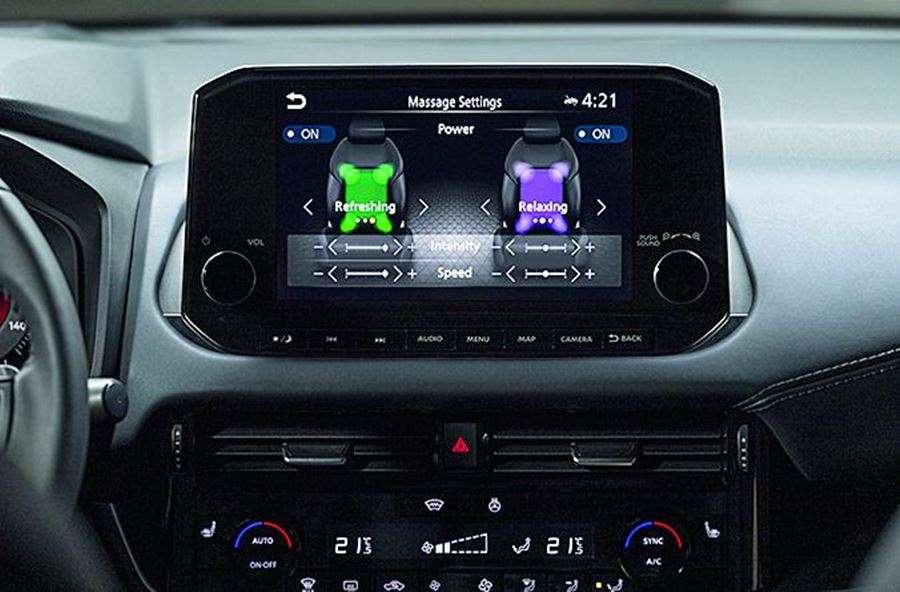
Nissan Qashqai, photo: Nissan
Digitization has also knocked hard on Qashqai’s doors. Large digitized 12.3-inch instruments, advanced multimedia with a 9-inch 3D screen, innovative and largest-in-class head-up 10.8-inch screen, interesting animations and wireless mobile charging are part of the new ambience accompanied by a smartphone app which will be able to control the secondary functions. Furthermore, the ProPilot safety system gets a connection to the navigation and detects real and potentially dangerous events in front of and around the car faster and more accurately. The system comes in versions with automatic transmission.
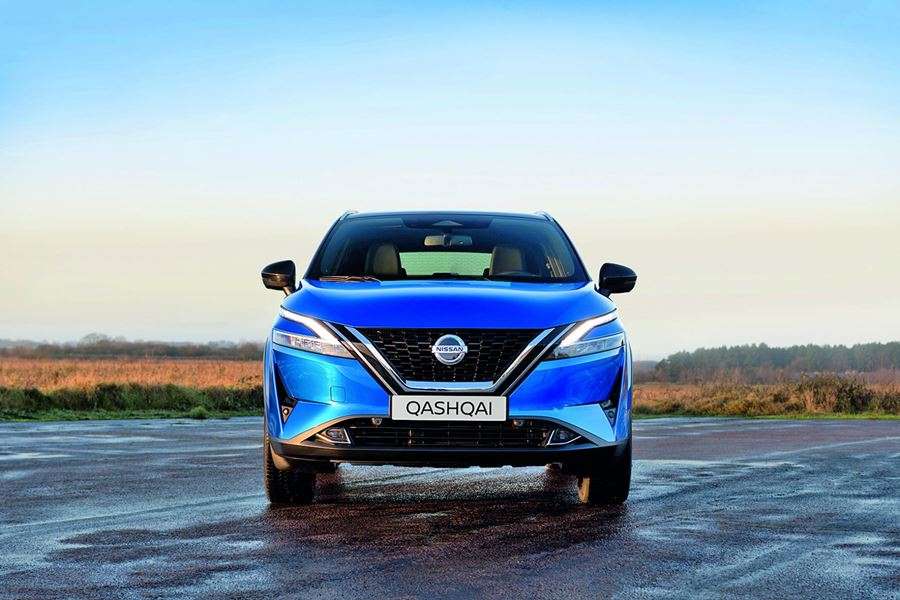
Nissan Qashqai, photo: Nissan
One of the significant innovations will be the electrification of the drive, in terms of a 12-volt mild hybrid version of the famous 1.3 turbo gasoline known designation DIG-T (Direct Injection Gasoline-Turbo), upgraded to 50 components. Mild hybridization does not affect the change in rated power, which is maintained at 140 and 158 hp with torques of 240 and 260 Nm, but will have positive effects on reducing consumption and have the function of giving additional momentum of power and torque when accelerating. The base engine has front-wheel drive and a six-speed manual transmission, more powerful as well, but it comes with four-wheel drive 4x4 and a new-generation X-tronic automatic transmission (CVT) as options. With automatic torque increases to 270 Nm.
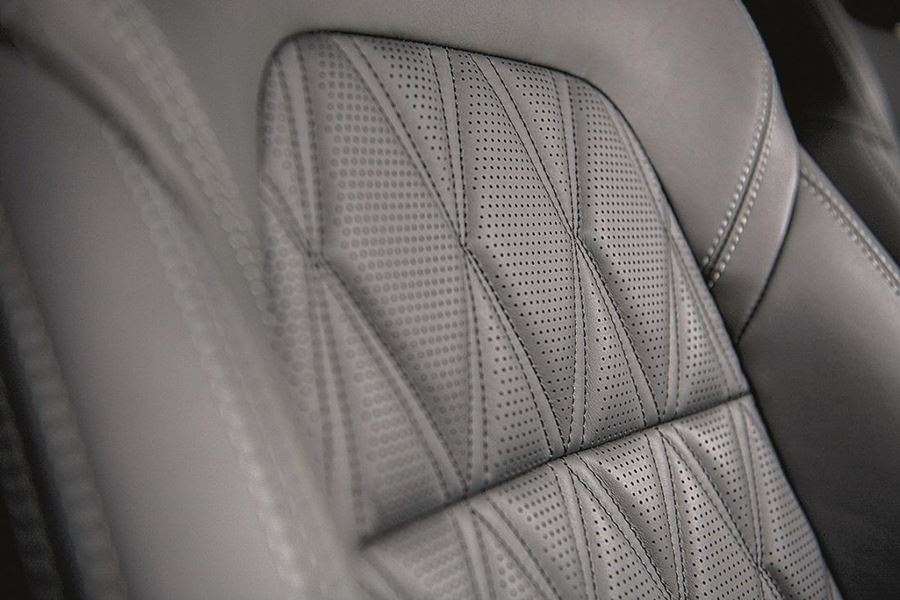
Nissan Qashqai, photo: Nissan
The hybrid system carries 22 pounds of weight. An interesting hybrid version of the e-Power unusual operating principle has also been announced, in which the 1.5 turbo petrol engine has a secondary function in relation to the electric motor. The total power output is 190 hp, but the story is somewhat reversed compared to classic hybrids. The petrol is basically not used for propulsion, but primarily for charging a powerful battery and transmitting power to an electric motor that drives the wheels itself, so the ride is very reminiscent of driving an electric car.
The Qashqai also gets a single-pedal e-Pedal braking and acceleration system, known from the electric Leaf. With the new platform, the basis of a more complete driving experience will be thorough refinements on more precise and flexible steering wheel operation, but also filigree polished suspension, which remains semi-rigid in the standard versions, while 4x4 and top models with standard 20-inch wheels go multilink.
And Ford is becoming an electric brand: It will cooperate with Volkswagen
The acceleration has begun and from now on we will hear almost daily news about which car brand is becoming fully electric in the period ahead. After Mercedes, Jaguar Land Rover, Bentley and many others, Ford has now stated that from 2030 it will offer exclusively electric models in Europe, as well as that the first European Ford on electricity will be made on the VW platform.
According to the promise from Ford, by the middle of 2026, every model on the European market will be available as a plug-in hybrid or electric, and by 2030, this company will switch exclusively to electricity.
Full electrification refers to passenger models, while commercial vehicles will have zero emissions by 2024.
All this fits in with the announcements from numerous European countries that they will ban the sale of gasoline and diesel engines by 2030, among which the United Kingdom is in the lead.
That is why Honda, Volvo, Nissan and others have announced that they will not even offer models with conventional drive in Europe. Honda will start implementing this plan as early as next year.
As for Ford, they are investing a billion dollars in the renovation of the factory in Cologne, where the production of the first European fully electric model will begin in 2023.
It will use Volkswagen's MEB platform on which the ID.3 and ID.4 models are created, and the first EV model from Ford made in Europe will be produced in parallel with the Fiesta. More information will be revealed in the coming period.
These five driving errors are ruined by the manual transmission! (VIDEO)
These five basic mistakes are often repeated by less experienced drivers, and each of them significantly increases the wear of all parts of the manual transmission…
It is well known that students in driving schools gain too little knowledge about car mechanics, as well as about the wrong driving style that harms the car. Driving according to the regulations is not all that is needed to keep the car in good condition. That is why older and more experienced drivers often point out to young people errors that do not affect driving safety, but greatly reduce the durability of the car's mechanical components.
The vast majority of them come down to improper handling of the manual transmission. Unlike an automatic, a manual transmission offers better control of the vehicle, but at the same time requires more attention when using it. Every experienced mechanic knows very well that clutch wear can be increased several times by careless driving.
1. Rest your right hand on the shift lever
2. Hold the clutch pedal depressed while waiting
3. Keeping the car uphill using the clutch, instead of the parking brake
4. Abrupt acceleration in high gear
5. Rest the left foot on the clutch pedal, instead of on the foot rest
{vembed Y=_cbZlhduYJY}


